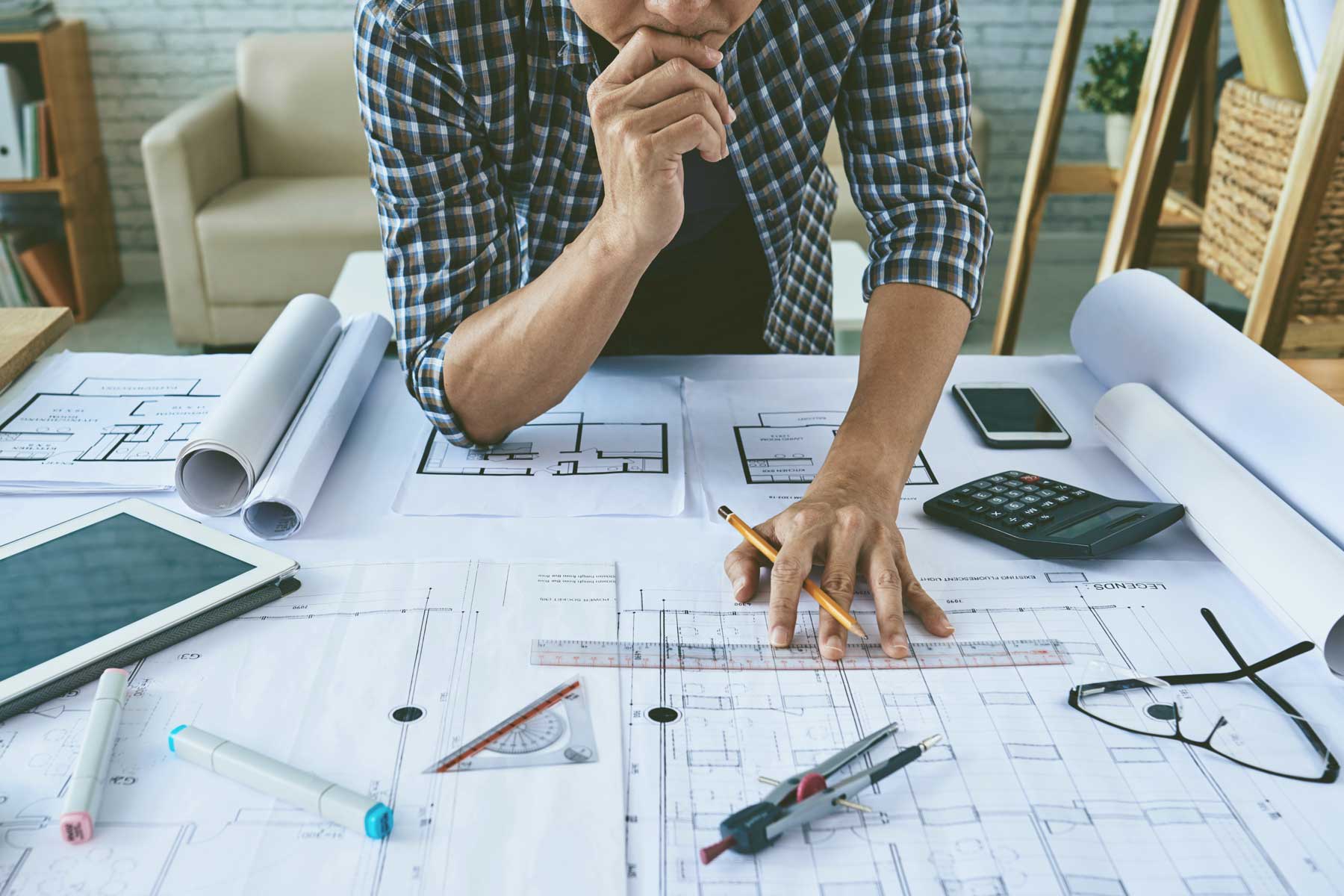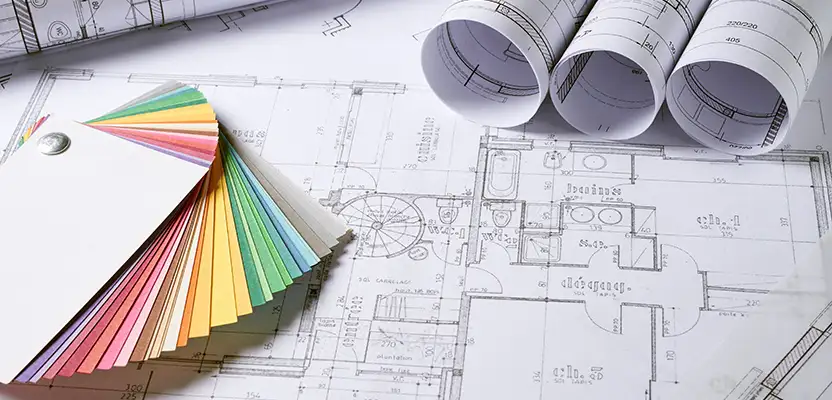Architect Tips for Designing Contemporary Residential Spaces
Architect Tips for Designing Contemporary Residential Spaces
Blog Article
Recognizing the Diverse Career Paths Available for Aspiring Architect
As an aspiring Architect, you have a world of career paths waiting for you. Each course supplies one-of-a-kind challenges and opportunities to apply your imagination and technological know-how. Whether you're attracted to standard architecture or the nuances of lasting layout, there's a particular niche that lines up with your passions. Understanding these diverse alternatives can form your professional journey, however which instructions will you pick to explore first?
Typical Design: Creating Structures and buildings
Typical design concentrates on making structures and structures that blend capability with aesthetic allure. Your layouts can show social heritage, showcasing local practices while satisfying modern-day needs.
You'll develop abilities in drafting, model-making, and site analysis, allowing you to visualize and connect your concepts properly. Engaging with clients, you'll require to understand their vision and convert it into viable styles.
Furthermore, constructing codes and sustainability methods are important in your work, guaranteeing your structures are risk-free and eco-friendly. As you grow in your job, you'll discover chances in residential, business, or even reconstruction tasks, each offering unique challenges. Embracing traditional style leads the way for a satisfying career that pays tribute to the past while shaping the future.
Urban Preparation: Forming Neighborhoods and Public Spaces
As an ambitious Architect, you can play a crucial function as a city planner, transforming just how communities connect and function. By using community involvement techniques, you'll assure that residents have a voice in forming their setting. Plus, integrating lasting design principles will certainly help produce areas that not just fulfill today's needs however likewise shield the future.
Role of Urban Planners
While numerous may think of architects as the sole dreamers behind structures, metropolitan coordinators play a necessary function in shaping the broader landscape of areas and public rooms. By working together with different stakeholders, you'll help design parks, transport systems, and household locations that promote social communication and access. Your experience in spatial style and community characteristics permits you to visualize future growth while maintaining social heritage.
Area Interaction Techniques
Effective area interaction strategies are essential for metropolitan planners to assure that the voices of citizens are heard and valued in the preparation process. To cultivate meaningful discussion, you must prioritize open online forums and workshops where community participants can reveal their concepts and concerns. Usage surveys and social media sites to reach a more comprehensive audience, making certain diverse viewpoints are included. Teaming up with local companies can enhance depend on and facilitate much deeper links. It's crucial to provide clear info concerning decision-making processes and suggested tasks, allowing citizens to really feel informed and equipped. By proactively including and listening comments, you'll develop spaces that show the neighborhood's demands, ultimately bring about more successful and sustainable city environments. Accept openness and continual discussion for lasting effect.
Lasting Layout Concepts
When creating metropolitan areas, incorporating sustainable design concepts is critical for developing settings that prosper both ecologically and socially. You ought to start by concentrating on power effectiveness, utilizing materials that reduce waste and advertise recycling. Take into consideration incorporating eco-friendly spaces, like parks and yards, to improve biodiversity and improve air top quality. Advertising walkability and public transport can minimize dependence on cars and trucks, promoting a healthier area.
Creating with water conservation in mind is additionally essential-- consider rainfall gardens and absorptive surfaces to take care of stormwater. Involving area members throughout the planning process warranties that the spaces you create satisfy their demands and motivate social communication. By accepting these concepts, you'll contribute to lively, lasting city landscapes that benefit everyone.

Landscape Style: Developing Lasting Outside Settings
As you check out landscape style, you'll find important style principles that produce functional and lovely outside spaces. Lasting practices play a vital function in guaranteeing these settings flourish while minimizing ecological impact. And also, you'll find a range of career possibilities that allow you to make an actual difference in just how people engage with nature.
Design Principles in Landscape
Recognizing style concepts in landscape architecture is necessary for creating sustainable exterior environments that balance with nature. You'll require to consider aspects like percentage, equilibrium, and scale to guarantee your styles feel natural and inviting. Integrating indigenous plants not only improves biodiversity however also decreases water use, making your landscape resistant. Think of the circulation of room and how people engage with it; paths and seating locations should invite exploration and relaxation. Furthermore, take notice of seasonal adjustments, designing with materials that match the surroundings year-round (Architect). By focusing on sustainability and aesthetics, you can produce exterior areas that improve the area and advertise health. Welcoming these concepts will certainly establish a solid structure for your career in landscape architecture.
Sustainable Practices Summary
Sustainable methods in landscape architecture not only concentrate on visual appeals yet also focus on ecological health and wellness and resource preservation. You can design areas that promote soil health and wellness, such as practicing and utilizing natural materials permaculture principles. Ultimately, these practices guarantee your layouts profit both individuals and the environment for years to come.
Occupation Opportunities Exploration
With a solid foundation in lasting methods, landscape design provides a selection of job paths that enable you to make a meaningful effect on the setting. You could work as a landscape designer, developing aesthetically pleasing and practical exterior spaces, or focus on ecological remediation, helping to revive broken ecosystems. Urban organizers commonly team up with landscape engineers to develop eco-friendly areas in metropolitan settings, enhancing city livability. If you're enthusiastic concerning education and learning, think about ending up being a landscape architecture educator, motivating future generations. In addition, you may collaborate with nonprofits focused on ecological sustainability or take part in research study to innovate brand-new techniques. Each path not only forms lovely atmospheres yet also promotes a much healthier world for future generations.
Sustainable Style: Concentrating On Eco-Friendly Practices
As you explore your career in design, embracing green practices can establish you apart in a competitive field. Lasting design concentrates on developing buildings that lessen environmental influence while improving occupant health. By integrating eco-friendly materials, energy-efficient systems, and lasting structure techniques, you'll add to a greener future.
Beginning by acquiring understanding of environment-friendly accreditations like LEED or BREEAM, which can strengthen your credentials. Think about exactly how all-natural light, air flow, and thermal efficiency can enhance style. Team up with engineers and environmental experts to introduce remedies that reduce waste and save resources.
Do not neglect the relevance of community involvement-- engaging regional stakeholders can influence styles that balance with the setting. As customers significantly focus on sustainability, your knowledge in environment-friendly techniques will certainly not just bring in tasks yet additionally accomplish your interest for liable style. Welcome this critical facet of the career, and see your job prosper.
Historical Conservation: Securing and Bring Back Cultural Heritage
While you commence on your architectural trip, take into consideration the crucial duty of historical preservation in maintaining our cultural heritage. This area concentrates on the security and remediation of significant structures, websites, and frameworks that inform the stories of our past. Learn More By taking part in original site historical conservation, you'll help safeguard the building tradition that shapes community identification.
As a historical preservation Architect, you'll evaluate historic importance and assess the condition of frameworks. You'll work carefully with historians and preservationists to ensure genuine repair techniques are utilized. This career course allows you to blend creativity with research study, allowing you to develop remedies that appreciate initial materials and workmanship.
Your work not only adds to sustainability by reusing existing buildings yet also cultivates a sense of pride within areas. Embracing this path will certainly help you end up being a guardian of background, preserving the stories and aesthetics that enhance our lives.
Inside Architecture: Enhancing Indoor Spaces
Historical conservation and interior design both share a dedication to boosting the built atmosphere, yet they concentrate on different elements. While historical conservation stresses maintaining a structure's social and historic worth, interior architecture nos in on maximizing interior rooms for functionality and aesthetic appeals.
As an ambitious Architect, you'll locate that interior architecture allows you to blend imagination with technological abilities. You'll make rooms that not just look excellent but also promote comfort and efficiency. This field involves understanding how light, color, and materials communicate within an area, impacting mood and functionality.
You'll work with numerous jobs, from household homes to commercial workplaces, making certain that each environment fulfills the requirements of its occupants. By focusing on customer experience, you can transform insides into inspiring and functional rooms, making a significant influence on exactly how people connect with their environments. Embrace the opportunity to boost indoor settings and shape the means people live and work.
Industrial Layout: Merging Functionality With Appearances
Industrial design plays a vital role in producing items that perfectly mix aesthetic appeals with capability, making sure that what you use daily is not only aesthetically enticing but also practical. As an aspiring Architect, you could engage on your own in this area, concentrating on developing every little thing from furniture to consumer electronic devices. Your job involves recognizing individual needs, materials, and making processes, enabling you to develop innovative services that boost everyday experiences.
In industrial layout, you'll typically team up with engineers, online marketers, and producers, ensuring that your designs are not only stunning yet additionally viable. You'll learn to stabilize form and function, focusing on use without giving up design. By sharpening your abilities in laying out, 3D modeling, and prototyping, you'll be well-appointed to bring your concepts to life. This occupation course provides a vibrant atmosphere where imagination fulfills usefulness, making it a fulfilling selection for designers thinking about shaping the items of tomorrow.
Regularly Asked Questions
What Educational Certifications Do I Required to Become an Engineer?
To come to be an engineer, you'll need a specialist degree in design, generally a Bachelor's or Master's. Furthermore, you'll need to complete an imp source internship and pass the Architect Enrollment Exam to practice lawfully.
Exist Certification Requirements for Different Building Job Paths?
Yes, there're certification demands for different building courses. Architect. You'll need to pass examinations, total teaching fellowships, and sometimes pursue specialized training, depending upon your picked focus, like landscape architecture, urban style, or historical preservation
What Software Application Skills Are Necessary for Designers Today?

Just How Can I Gain Practical Experience While Studying Style?
You can acquire useful experience by interning at building firms, getting involved in design competitions, offering for neighborhood tasks, or collaborating with schoolmates on real-world jobs. These chances enhance your abilities and develop important connections in the market.
What Task Opportunities Exist Outdoors Standard Architecture Firms?
You can discover various work chances outside traditional design firms, like metropolitan planning, indoor design, landscape style, building monitoring, genuine estate growth, or perhaps duties in sustainability consulting. Each offers one-of-a-kind challenges and benefits.
Whether you're drawn to traditional style or the nuances of lasting style, there's a niche that straightens with your interests.When making metropolitan rooms, integrating sustainable style concepts is important for developing environments that prosper both environmentally and socially.As you explore landscape design, you'll find essential design principles that produce practical and attractive exterior areas.Comprehending style concepts in landscape style is essential for creating sustainable outside atmospheres that balance with nature.In commercial style, you'll usually collaborate with engineers, producers, and marketing professionals, ensuring that your layouts are not just beautiful however likewise possible.
Report this page